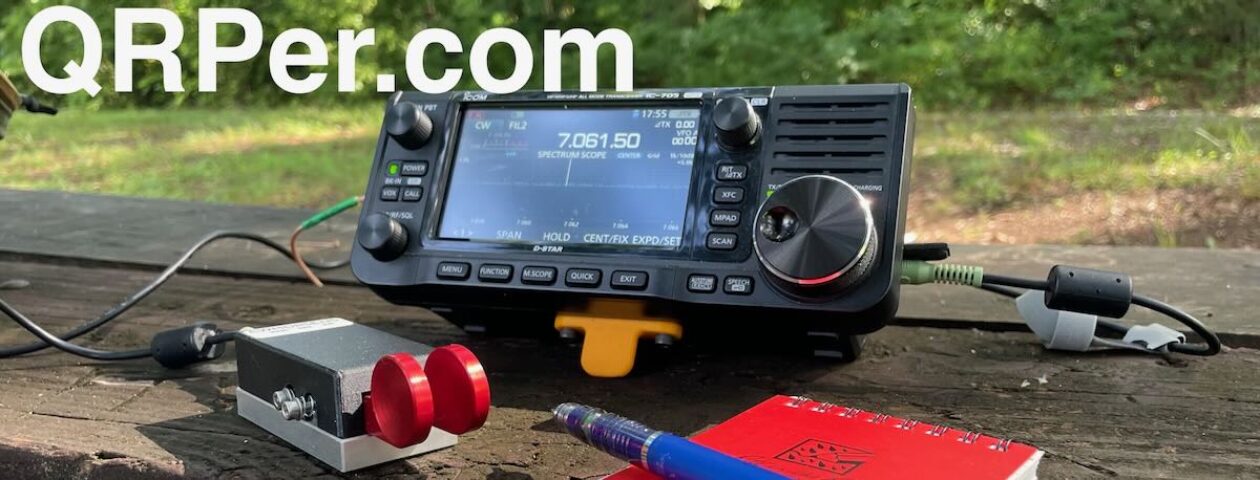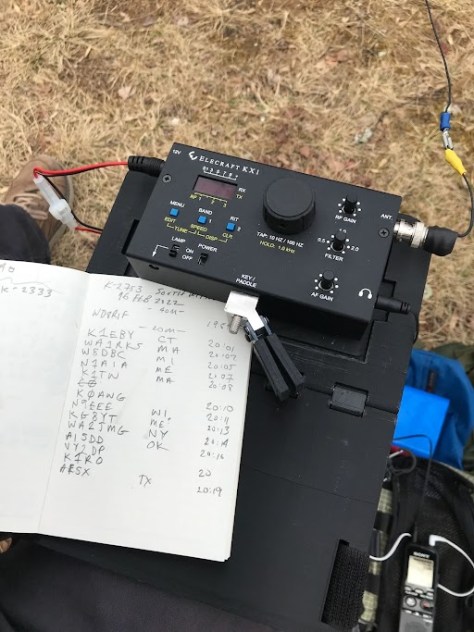 If you’ve been following this site for long, you’ll know I’m a big fan of the Elecraft KX1 [understatement alert].
If you’ve been following this site for long, you’ll know I’m a big fan of the Elecraft KX1 [understatement alert].
I owned one for the better part of a decade, then sold it to purchase a KX2 in 2016. I almost instantly regretted selling it.
In 2020 I purchased another KX1 for $300; like my previous one, it was a four band model, with ATU and paddles. In fact, it even came with a number of other accessories like a proper Pelican 1060 case.
I made dozens of POTA activations with this little KX1 and named her “Ruby” (because I tend to name radios that are a permanent part of my collection).
Trouble in paradise
In the summer of 2021, though, Ruby started exhibiting some issues. This was not completely unexpected because:
- All KX1s started life as a kit. None were factory assembled and tested by Elecraft. Quality varies based on the original kit builder.
- I believe Ruby is pushing 20 years old.
The main issue was, after turning on the power switch, the rig wouldn’t completely power up. Instead of the typical two clicks we KX1 owners are accustomed to hearing, I only heard one click and neither the display nor any of the functions worked.
This was an intermittent issue–the next day it might power up as it should. I continued operating and tried to find the issue myself, but my skills at doing repairs on radios is very limited.
I took Ruby to Dr. Vlado who traced the issue to a faulty encoder. I purchased a replacement encoder from Elecraft (along with a number of other spares) and Ruby was back on the air!
Back on the air for a while…
A couple months later, I discovered that power output would drop to nearly zero watts after about 20-25 minutes on the air. Basically, when the radio would get warm from operating, power output was affected.
Vlado traced the issue to a cold solder joint and repaired it (while also double checking other joints). Ruby worked perfectly for a few more activations…then once again the same issue with power output dropping reared its ugly head.
Right before we left for Canada this summer, Vlado found yet another cold solder joint and made the repair.
Once we were back home from Canada, I put Ruby back on the air. I did a lot of SOTA/POTA chasing from home and took her on a couple activations.
All was going well until a few weeks ago (you may see this in an upcoming activation video) when once again, power output took a nose dive after the radio warmed up from operating.
It appears old Ruby is just littered with cold solder joints.
I brought her home and decided that I would pull her completely apart this winter and re-solder every point on her board.
Parts radio hunt
Last year, I started hunting for a second KX1. I didn’t care if it was fully functioning because I was mainly searching for a parts radio.
The KX1 has become–and you’ll know this if you’ve been looking for one as well– as rare as hen’s teeth. When they do appear on the market, they command a premium.
In a full year, looking pretty steadily, I only found one reasonable deal on what sounded like a quality KX1. I contacted the seller and he told me that within the one hour his ad was published, he received 10 offers. He asked if I wanted to be put on the waiting list if all ten fell through.
“Okay, I guess?”
I blame the KX1 price increase on a few factors:
- Elecraft discontinued the KX1 several years ago. No more are being made.
- Others are looking for spare KX1s.
- The CW renaissance we’re going through (truly an amazing thing!)
- The popularity of POTA and SOTA
- It is still a very unique and capable field radio
- And quite possibly me, being so public about my love and admiration of the KX1 (where’s that foot of mine so I can shoot it?)
If you’ve been looking for a KX1, you’ve no doubt noticed the low supply and high prices.
Frankly, I’ve even felt a bit guilty looking for a second KX1 knowing how few there were on the market.
Then an opportunity
 A few weeks ago, I was chatting with a friend and–long story short–I discovered that a mutual friend of ours would be willing to sell me his KX1.
A few weeks ago, I was chatting with a friend and–long story short–I discovered that a mutual friend of ours would be willing to sell me his KX1.
It was a three band model with ATU and paddles.
He was the original builder and, in fact, this was the third KX1 he’d built. I know him and his soldering work; it’s top-shelf and professional.
I knew I’d likely never get an opportunity to be only the second owner of a KX1 and to actually know that the builder is one of the best out there.
He offered it to me for a fair price based on the current market. I didn’t want him to lose money by selling to me, so I agreed.
I’ve already taken the new KX1 on three activations and it’s performing flawlessly. In fact, I believe the built-in ATU is even doing a better job finding matches that the one in Ruby.
I still plan to work on Ruby this winter–it’ll make for a nice relaxing project some cold, snowy day. It’s the same process Vlado would have to go through (and he’d do it without hesitation) but I’d rather do it myself and save his time especially since it’ll be a bit tedious.
Oh yeah. The name for my new KX1?
Meet Ingrid!
Thank you for reading this post (which is arguably more of a confession and justification)! As always thank you for your support.

























